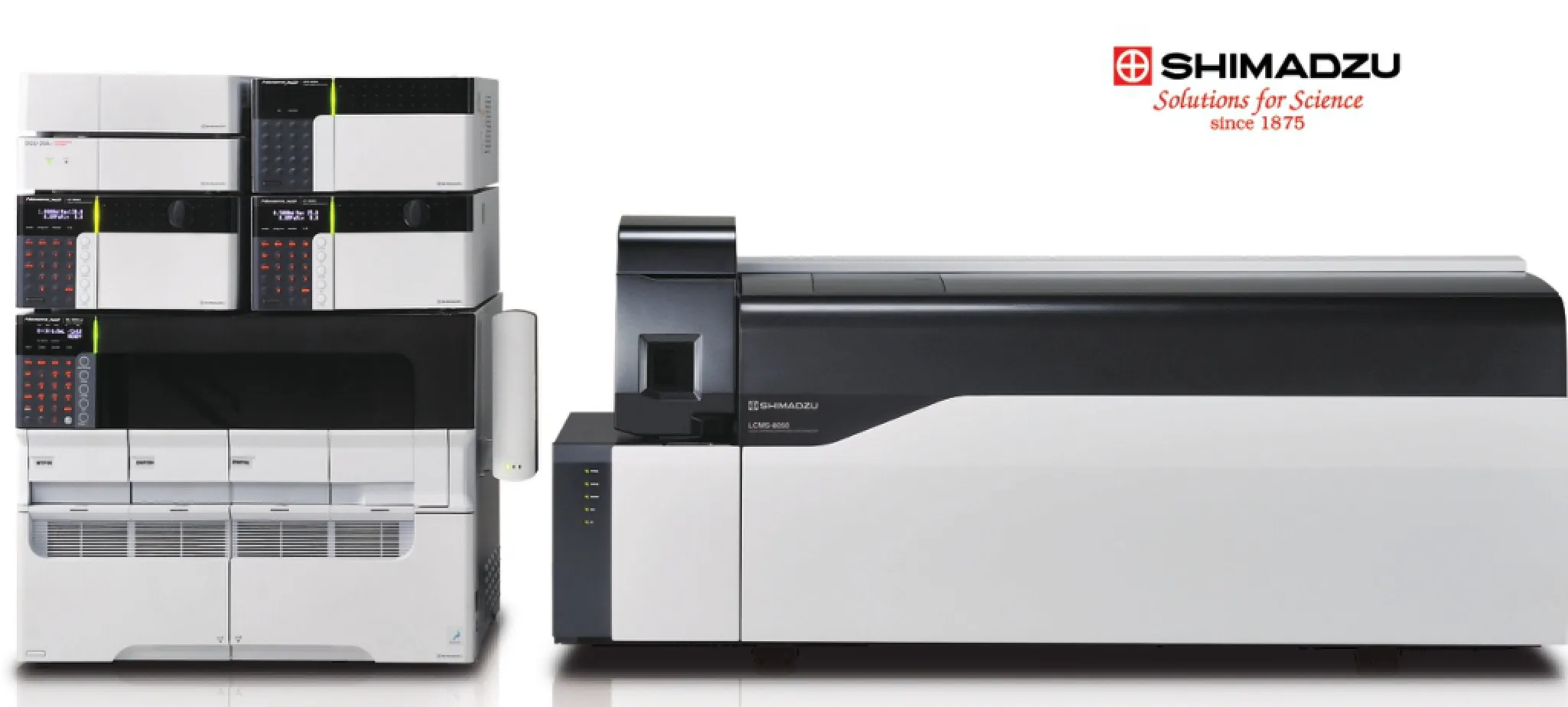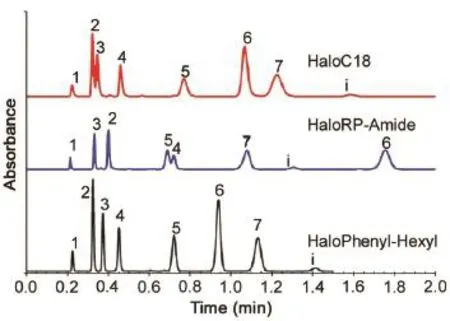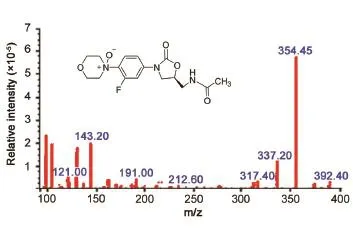Application of analytical instruments in pharmaceutical analysis
Information
Application of analytical instruments in pharmaceutical analysis
LCMS-8050
Continuing the evolution of Shimadzu’s UF technology, Shimadzu introduces the LCMS-8050 triple quadrupole mass spectrometer, offering unparalleled measurement speeds and high-sensitivity performance.
The high performance of the LCMS-8050 defies expectations, redefining high-sensitivity, high-speed analysis.
UFsensitivityTM
In order to improve desolvation efficiency, the newly developed heated ESI probe combines a high-temperature gas with the nebulizer spray, assisting in the desolvation of large droplets and facilitating ionization. This development allows for high-sensitivity analysis of a wide range of target compounds.
UFswitchingTM
When performing simultaneous positive/negative ion measurements of multiple components, the proper acquisition of sharp UHPLC peaks depends on rapid polarity switching. The LCMS-8050 minimizes losses due to polarity switching and ensures the collection of sufficient data points for even the narrow peaks obtained with UHPLC, recording accurate peak shapes and allowing excellent reproducibility.
UFscanningTM
The LCMS-8050 is capable of simultaneously obtaining both qualitative and quantitative information in a single analysis. Acquisition occurs so rapidly that MS/MS scans and MRM measurements can be performed concurrently while maintaining quantitative accuracy. MS/MS scans are usable and reliable because even at 30,000 u/sec, Shimadzu uses a 0.1 u scan step.
UF-MRM
The LCMS-8050 is capable of simultaneously acquiring 555 MRM transitions per second while maintaining accuracy and precision. Sufficient data points can be collected for quantitation ions, reference ions, and internal standard ions even in chromatographic regions with unresolved peaks. The high sensitivity of the LCMS-8050 allows for trace-level analysis, such as pesticides in drinking water, without the need for sample preconcentration. This high sensitivity is maintained even when monitoring numerous MRM channels.
Published papers by using LCMS-8050
1. S. Fekete, J. Schappler, J.L. Veuthey, et al., Current and future trends in UHPLC, Trend. Anal. Chem. 63 (2014) 2-13.
2. J. Beinhauer, L. Bian, H. Fan, et al., Bulk derivatization and cation exchange restricted access media-based trapand-elute liquid chromatography-mass spectrometry method for determination of trace estrogens in serum, Anal. Chim. Acta 858 (2015) 74-81.

GCMS-TQ8040
The Shimadzu GCMS-TQ8040 is the first triple quadrupole with Smart Productivity for high efficiency sample throughput, Smart Operation for quick and easy method development, and Smart Performance for low detection limits and Scan/MRM. These 3 smart technologies contribute to Smart MRM, and provide the most accurate, cost effective, and easy-touse triple quadrupole GCMS you have ever imagined.
Smart Productivity
Thanks to two new technologies, the GCMS-TQ8040 enables high-sensitivity, high-precision analyses, even in simultaneous analyses with more than 400 components. For the first new technology, a new firmware protocol was introduced. As a result, data loading efficiency is improved, enabling MRM analysis with up to 32,768 transitions in a single analysis. For the second, “Smart MRM” was newly incorporated into the software. This method creation function automatically sets the optimal measurement time for each component. Data is only acquired for the elution time for the target components, so more components can be analyzed simultaneously than with previous models, without compromising sensitivity even in multi-component simultaneous analyses.
Smart Operation
GC-MS /MS arnaatliyosnis requires multiple settings that can be confusing to the average operator. With Smart MRM, the GCMS-TQ8040 software sets the analytical conditions
automatically, making method development painless, fast, and easy.
Smart Performance
The exceptionally efficient ion source and collision cell provide low detection limits. High speed scanning control (Advanced Scanning Speed Protocol, or ASSP) and simultaneous Scan/MRM analysis mode provides high quality library searchable fragmentation spectra, and accurate low-level quantitative data in a single analysis.
Published papers by using GCMS-TQ8040
1. Y. Yang, W. Kong, L. Zhao, et al., A multiresidue method for simultaneous determination of 44 organophosphorous pesticides in Pogostemon cablin and related products using modified QuEChERS sample preparation procedure and GC-FPD, J. Chromatogr. B 974 (2015) 118-125.
2. X.T. Peng, L. Jiang, Y. Gong, et al., Preparation of mesoporous ZrO2-coated magnetic microsphere and its application in the multi-residue analysis of pesticides and PCBs in fish by GC-MS/MS, Talanta 132 (2015) 118-125.

LCMS-IT-TOF
The LCMS-IT-TOF is a new type of mass spectrometer that combines QIT (ion trap) and TOF (time-of-fl ight) technologies. When combining QIT and TOF, the greatest technological challenges were the effi cient introduction of ions into the QIT and the simultaneous ejection of trapped ions to the TOF. Here, we introduce the newly developed technologies used to solve these problems. The source design, desolvation capillary and reduced collision ion focusing Q-Array were adapted from Shimadzu’s successful single-quad HPLC mass spectrometer. The Octapole Lens can introduce eluted ions from the LC to the ion trap by CII (Compressed Ion Injection) method effi ciently. The ion trap QIT gives an effi cient MSncapability with our new cleaning technology. In addition, BIE (Ballistic Ion Extraction) technology, provides high resolution/accuracy for all MS, MSn... modes. The temperature control of the fl ight tube gives a mass stability with stabilizing the length of the ion fl ight and ion acceleration voltage which affects the mass stability. Dual-Stage Refl ectron gives an excellent resolution with optimizing energy absorption and time convergence.
High Resolution & High Precision in MSnMeasurement
The stable high-resolution spectra achieved throughout a wide mass range and high precision MSndata are derived from the DSR: Dual-Stage Refl ectron and the use of BIE: Ballistic Ion Extraction.
These instrument advances can strongly assist in the use of MS for predicating accurate structural details.
High Throughput
Increased amounts of information are obtained for each measurement enabling much higher reliability in structural analysis. High-throughput analysis can be realized with the world’s best performance hybrid MS used for structural analysis in terms of high-speed mass spectrum measurement and high-speed ion polarity
switching.
High Sensitivity
High-Sensitivity detection of low concentration samples is derived through the use of Compressed Ion Injection (CII) within the ion optics, allowing for the ions to be placed effi ciently into the ion trap.

Published papers by using LCMS-IT-TOF
1. E. Sommella, G. Pepe, G. Ventre, et al., Evaluation of two sub-2 μm stationary phases, core-shell and totally porous monodisperse, in the second dimension of on-line comprehensive two dimensional liquid chromatography, a case study: Separation of milk peptides after expiration date, J. Chromatogr. A 1375 (2015) 54-61.
2. G. Pepe, E. Sommella, M. Manfra, et al., Evaluation of anti-infl ammatory activity and fast UHPLC-DAD-IT-TOF profi ling of polyphenolic compounds extracted from green lettuce (Lactuca sativa L.; var. Maravilla de Verano), Food Chem. 167 (2015) 153-161.
i-Series
With the i-Series and LabSolutions, Shimadzu offers a new relationship between operators and analytical instruments. The data acquired by i-Series featuring ICM (Interactive Communication Mode) is sent to the data center via the LabSolutions network and managed uniformly by a server. Confirm analytical results from your room. Use a smart device to monitor the current system status and chromatograms from anywhere in the facility.
Maximum Reliability
A 14-second injection cycle maximizes the number of samples that can be processed. Moreover, a total of 1536 samples can be accommodated in right and left sample racks. Excellent reproducibility for low injection volume less than 1 μL, wide range of linearity range and ultralow carryover (<0.0025%) improve the reliability of data, especially for analyses of precious biological samples and direct analyses of concentrated samples.
Maximum Stability
The UV/VIS detector and the PDA detector employ dualtemperature control (TC-Optics and flow cell) and provide measurements with a stable baseline hardly affected by room temperature fluctuation. The Forced-air circulation method enhances column temperature stability. Maximum operating temperature of 85°C allows high-temperature analyses such as sugar analysis. Moreover, three 300 mm long columns or six 100 mm long columns can be accommodated.
Easier Operation
Uniform graphical user interfaces between system and workstation allow intuitive operations regardless of experience level and increase the operation availability of the i-Series. The browser functions in LabSolutions bring rapid processing of large amount of data, realtime statistical calculation and easy confirmation of anomalous values, enabling more efficient data processing.
Wealth Applications
Although it is an integrated LC system, the i-Series supports a wide range of applications according to your choice of detectors. Basic systems come with the choice of a UV-VIS detector or photodiode array (PDA) detector. You can add to this a fluorescence detector, a differential refractive index detector and a Evaporative Light Scattering Detector, as necessary. The innovative and superior performance of the i-Series supports your application requirements.
Smart Features
The i-Series saves lab operators time and energy.
Combined with the LabSolutions automated functions, it reliably completes analyses under specified procedures. In addition, the E-mail notification feature allows you to focus on other work, without worrying about analysis end time.

JPA Prize in 2014

JPA Prize Medal
The outstanding editor awarded the 2014 JPA Prize was as follows:
Bart De Spiegeleer
Department of Pharmaceutical Analysis
Drug Quality & Registration group
Ghent University
Belgium
The two excellent referees awarded the 2014 JPA Prize were as follows:
1. Stacy Brown
Pharmaceutical Sciences
East Tennessee State University
United States of America
2. Satyanarayanaraju Sagi
School of Pharmacy
National Center for Natural Products Research
University of Mississippi
United States of America
The three top cited papers awarded the 2014
JPA Prize were as follows:
1. Joseph J. Kirkland, Stephanie A. Schuster*, William L. Johnson, Barry E. Boyes. Fused-core particle technology in high-performance liquid chromatography: An overview. Journal of Pharmaceutical Analysis, 2013, 3(5): 303-312.

Fig. 2 Separation of anticoagulants with fused-core columns of different selectivities. Columns: 50 mm × 4.6 mm Halo C18, 50 mm × 4.6 mm Halo RP-amide, 50 mm × 4.6 mm Halo phenyl–hexyl; mobile phase: A/B = 40/60; A = 0.1% formic acid, pH 2.6; B = methanol/acetonitrile, 50/50; flowrate: 2.0 mL/min; temperature: 45 ºC; pressure: 210 bar; detector, UV: 254 nm; 1 μL injection; andsolutes: (1) uracil, (2) 4-hydroxycoumarin, (3) coumarin, (4) 6-chloro-4-hydroxycoumarin, (5) warfarin, (6) coumatetralyl, and (7) coumachlor, i = impurity.
2. Srinivasa Rao Polagani, Nageswara Rao Pilli,
Ramakrishna Gajula, Venkateswarlu Gandu*.
Simultaneous determination of atorvastatin, metformin and glimepiride in human plasma by LC-MS/MS and its application to a human pharmacokinetic study. Journal of Pharmaceutical Analysis, 2013, 3(1): 9-19.
3. T. Satyanarayana Raju*, O. Vishweshwari Kutty, V. Ganesh, P. Yadagiri Swamy. A validated stabilityindicating LC method for the separation of enantiomer and potential impurities of Linezolid using polar organic mode. Journal of Pharmaceutical Analysis, 2012, 2(4): 272-278.

Fig. 3 Complete degradation profile of Linezolid along with the % impurity formation and corresponding mass nos. of impurities.
 Journal of Pharmaceutical Analysis2015年6期
Journal of Pharmaceutical Analysis2015年6期
- Journal of Pharmaceutical Analysis的其它文章
- Comparative study of adsorptive role of carbonaceous materials in removal of UV-active impurities of paclitaxel extracts☆
- In vitro–in vivo studies of the quantitative effect of calcium, multivitamins and milk on single dose cipro fl oxacin bioavailability☆
- Optimization,validation and application of an assay for the activity of HMG-CoA reductase in vitro by LC–MS/MS☆
- Antimicrobial and antiproliferative prospective of kosinostatin–a secondary metabolite isolated from Streptomyces sp.☆
- Quanti fi cation of tolvaptan in rabbit plasma by LC–MS/MS:Application to a pharmacokinetic study☆
- Identi fi cation,synthesis and characterization of process related des fl uoro impurity of ezetimibe and HPLC method validations☆
